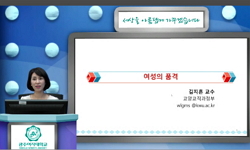The novels by Oh, Jung-Hee have been recognized as the excellent literary imagery showing the dichotomy of an abyss of beings and conflict/contradiction, and desire and stability. One thing we should pay attention to is that almost every work by Oh, J...
http://chineseinput.net/에서 pinyin(병음)방식으로 중국어를 변환할 수 있습니다.
변환된 중국어를 복사하여 사용하시면 됩니다.
- 中文 을 입력하시려면 zhongwen을 입력하시고 space를누르시면됩니다.
- 北京 을 입력하시려면 beijing을 입력하시고 space를 누르시면 됩니다.
부가정보
다국어 초록 (Multilingual Abstract)
Making them come back home after going out is not important. It would be necessary to have questions such as what makes them go out, what makes them come back, and why the act of 'walking' for women should be named 'taking a walk' or 'going out' that always has destinations. The repetitive motif means that it contains the narrative symbolism. When walking on the street which is not allowed to women instead of house allowed to women, the reality of female characters in the novels by Oh, Jung-Hee could be more solidly viewed.
Therefore, this paper aims to analyze/understand the meanings of 'walking' for women shown in the novels by Oh, Jung-Hee, by analyzing the walking always shown in the novels by Oh, Jung-Hee to examine the parts that have not been revealed in the novels by Oh, Jung-Hee, and also recomposing the imagery process of gender differentiation as women.
The novels by Oh, Jung-Hee have been recognized as the excellent literary imagery showing the dichotomy of an abyss of beings and conflict/contradiction, and desire and stability. One thing we should pay attention to is that almost every work by Oh, Jung-Hee repetitively shows 'walking women' besides 'family'. The motif of 'walking' repetitively shown in the novels by Oh, Jung-Hee is not a simple repetitive act, but an act revealing the gender difference and an ontological act showing all the meaning, limitation, and restriction of lives as women.
Making them come back home after going out is not important. It would be necessary to have questions such as what makes them go out, what makes them come back, and why the act of 'walking' for women should be named 'taking a walk' or 'going out' that always has destinations. The repetitive motif means that it contains the narrative symbolism. When walking on the street which is not allowed to women instead of house allowed to women, the reality of female characters in the novels by Oh, Jung-Hee could be more solidly viewed.
Therefore, this paper aims to analyze/understand the meanings of 'walking' for women shown in the novels by Oh, Jung-Hee, by analyzing the walking always shown in the novels by Oh, Jung-Hee to examine the parts that have not been revealed in the novels by Oh, Jung-Hee, and also recomposing the imagery process of gender differentiation as women.
동일학술지(권/호) 다른 논문
-
동사 파생접미사 ‘-대다’에 대하여 - 규칙적 어근과 결합하는 ‘-대다’를 중심으로 -
- 배달말학회
- 박은경 ( Park Eun-kyeong )
- 2018
- KCI등재
-
- 배달말학회
- 양지현 ( Yang Ji-hyeon )
- 2018
- KCI등재
-
한국어 중급학습자의 말하기에서 나타나는 어휘 대치 오류에 대하여
- 배달말학회
- 배연화 ( Pae Youn-hwa )
- 2018
- KCI등재
-
설명문과 논설문 쓰기에서 문단 구현 양상 조사 연구 - 대학교 신입생의 글쓰기를 대상으로 -
- 배달말학회
- 서종훈 ( Suh Jong-hoon )
- 2018
- KCI등재





 KCI
KCI KISS
KISS






